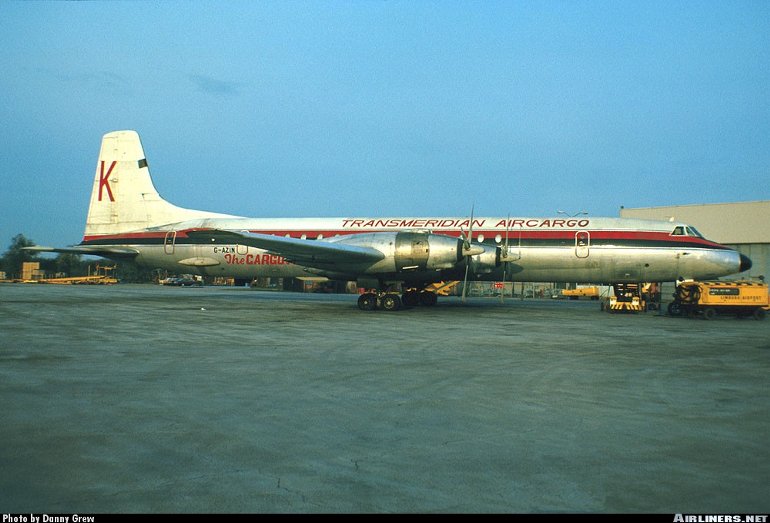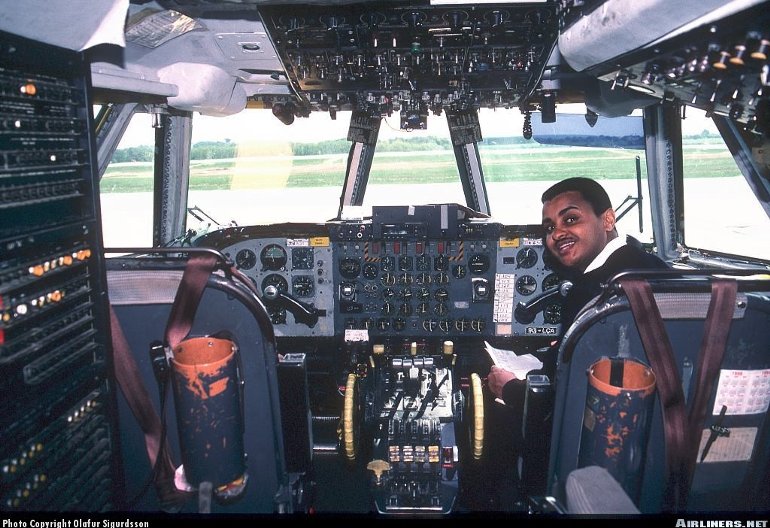Aircraft Technical Data
Canadair CL-44 & Yukon


| Details | |
| Country of Origin | Canada |
| Type | Medium to long range airliner and freighter |
| History | The CL-44 can be seen as an enhanced Bristol Britannia 300. In mid 1950s the Royal Canadian Air Force has a requirement for a maritime patrol aircraft to replace their Lacanster aircraft serving in this role. What resulted was the CP-107 Argus. which was licence built on the base of the Bristol Britannia. The Argus differed from the Britannia in a number of significant respects - it was powered by Wright Turbo Compound radial engines (selected in place of turboprops to give better endurance and low speed performance at low altitude), and a redesigned unpressurised fuselage incorporating a weapons bay. With Canadair already producing the Argus, it was a relatively simple matter to offer a Britannia based design to meet an RCAF requirement for a transport to replace the aging DC-4M Northstar. The transport became the CC-106 Yukon (or to Canadair, the CL-44-6). Twelve were built, featuring Rolls Royce Tyne turboprops, lengthened fuselage with two large conventional side freight doors. The wings and tail plane, landing gears and cockpit were kept mostly the same as on the Britannia. The first Yukon flew on November 15 1959. It also featured some extra military stuff which was not taken up on the civillian version. This included an APU, elektrik trimming, enhanced radar, transportable loading system etc. Canadair then began to offer the Yukon to commercial customers and developed the CL-44D-4, which featured a hinged tail which considerably simplified loading. (Swingtail) Due to new FAA/CAA regulations on visibility requirements the Britannia type winshields were replaced by newer and bigger windshield originating from the Convair 880. The first CL-44D-4 flew on November 16 1960, and at that time the model was the largest and first commercial freighter in the world to offer a 30t turn around in less then 60 minutes. The CL-44 is the first modern aircarft specially built for the commercial freight market. While all CL-44s in civil service have sooner or later been used as freighters, Loftleidir Icelandic Airline operated four CL-44Js plus a single CL-44D-4 in passenger configuration. The J, or "Rolls Royce 400 JetProp", differed from the D-4s in that it featured a 4.62m (15ft 2in) fuselage stretch. It is the only aircraft to be redrawn from service, cut, stretched and put into service again. In late sixties the CL-44J was the largest passenger aircraft over the Atlantic ocean with 189 passengers. This was bigger then 707 and DC-8. One CL-44 was converted by Conroy Aircraft in the US as a large volume freighter. Jack Conroy was hoping to get the lucratif contract to fly Rolls Royce engines for the Tristar. Instead Lockheed stretched their own L-100 and flew the engines themselves. The CL-44-O "Guppy" got a new voluminous cargo hold (similar to the Boeing 377ST Super Guppy conversions), and it flew after conversion for the first time on November 26 1969. All military Yukons found their way into civil service in Africa and South America after retirement in 1973. In 2001 no J-model has survived. Only one Yukon is alive and six CL-44D-4 remain in poor condition. Most have been parked for years. |
| Powerplants | CL-44D-4 - Four 4270kW (5730shp) RollsRoyce Tyne 515/50 turboprops driving four blade variable pitch propellers. |
| Performance | CL-44D-4 - Max cruising speed 647km/h (349kt), cruising speed 621km/h (335kt). Service ceiling 30,000ft. Range with max payload 4625km (2500nm), range with max fuel 8990km (4855nm). |
| Weights | CL-44D-4 - Operating empty 40,345kg (88,952lb), max takeoff 95,250kg (210,000lb). |
| Dimensions | CL-44D-4 - Wing span 43.37m (142ft 4in), length 41.73m (136ft 11in), height 11.18m (36ft 8in). Wing area 192.7m2 (2075sq ft). |
| Capacity | Flightcrew of two pilots and one flight engineer. CL-44D-4 - Max single class seating for 160 passengers (or 189 in the CL-44J). Max payload 29,959kg (66,048kg) |
| Production | A total of 27 civil CL-44s built (including four CL-44J and one CL-44-O conversions), and 12 military CL-44-6 designated CC-106 Yukon. Today only seven CL-44 still exist whereoff maximum three are airworthy. |
| Related Links | Canadair CL-44 & Yukon |
The backbone of this section is from the The International Directory of Civil Aircraft by Gerard Frawley and used with permission. To get your own copy of the book click here. |
|








